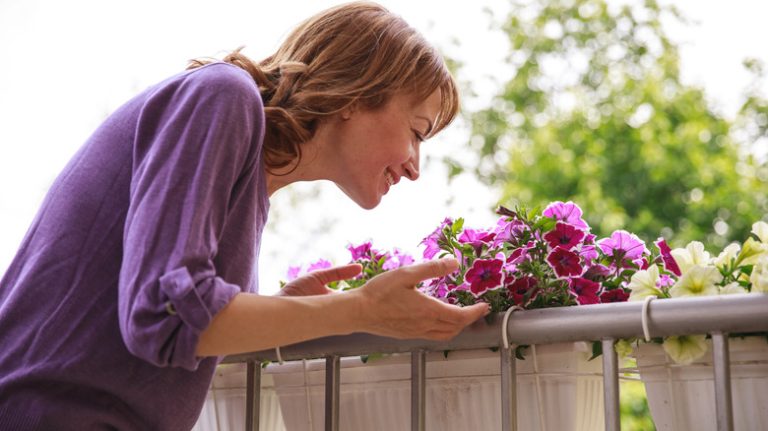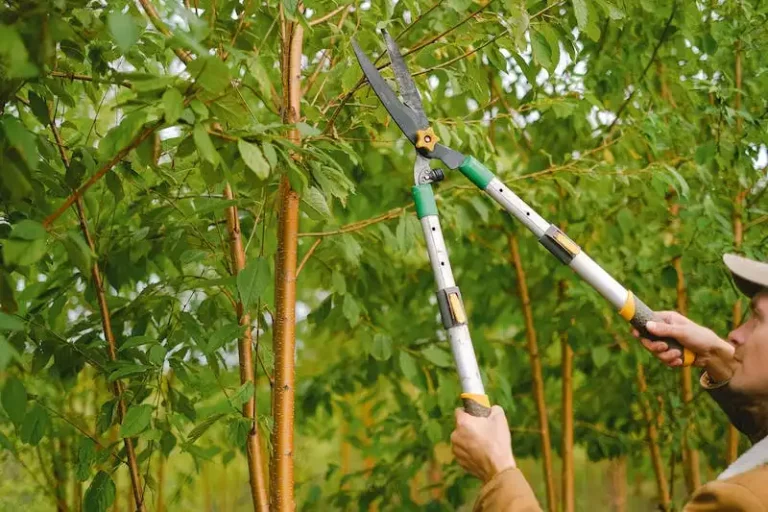If you are a gardener and you love roses, you are always looking for ways to make them bloom more profusely. A garden full of blooming roses is a sight to behold, and it can bring so much joy to your landscape. But sometimes, no matter how much you water and prune your roses, they just won’t bloom as much as you want them to. If that’s the case, here are some tips that will help you get your roses to bloom more profusely.
Tip #1: Find the right location for your roses. Roses need at least six hours of direct sunlight every day to bloom profusely. Make sure you plant them in a place where they can get that much sunlight. Also, choose a location that has well-drained soil. Roses don’t like wet feet, so avoid planting them in a flat, wet area. Sandy soil works best for roses, as it allows for proper water drainage.
Tip #2: Prune your roses regularly. Pruning is an important practice for roses. It helps stimulate growth and encourages more blooming. Deadheading, which is the act of removing dead flowers, is also important for blooming-heavy roses. When you deadhead your roses, make sure to cut the flower off just above the first set of leaves with five leaflets. This will promote new growth and more blooms.
Tip #3: Water your roses correctly. Roses need regular watering to bloom profusely, especially during the hot summer months. But overwatering can be just as bad as underwatering. Make sure to water your roses deeply, allowing the water to penetrate the root zone. Watering deeply encourages the roots to grow deeper, making the plants stronger and more capable of producing bigger and better blooms. Mulch the area around your roses to help retain moisture and prevent weeds from growing.
Tip #4: Consider fertilizing your roses. While roses are generally heavy feeders, too much fertilizer can lead to excessive foliage growth at the expense of blooming. Use a balanced rose fertilizer, such as a 15-15-15, and apply it according to the instructions on the package. Typically, roses need to be fertilized in early spring, after the last frost, and then again in late spring or early summer. Fertilizing your roses will provide them with the nutrients they need to produce beautiful, healthy blooms.
Bloom of Roses
Growing a beautiful rose garden requires proper care and attention to ensure that your roses bloom more profusely. Here are four tips that can help you achieve stunning blooms in your garden:
1. Choose the Right Location
When planting roses, it is important to select a suitable location in your garden. Roses need at least six hours of direct sunlight every day to thrive and produce abundant blooms. Choose a spot that receives plenty of sunlight and has well-drained soil. Additionally, roses appreciate good air circulation, so avoid planting them too close to walls or other plants.
2. Prune Regularly
Regular pruning is essential to encourage healthy growth and maximum blooming. Every year, usually in late winter or early spring, prune your roses to remove dead or diseased wood and to shape the plant. Pruning also helps to increase air circulation, which reduces the risk of diseases. Remember to wear protective gloves and use sharp, clean pruning shears to prevent the spread of infections.
3. Feed and Water Appropriately
Roses are heavy feeders, so it is important to fertilize them regularly to promote vigorous growth and abundant blooms. Apply a balanced rose fertilizer according to the package instructions, usually in early spring and again after the first big bloom. Additionally, roses need consistent moisture, so water them deeply once a week during dry periods. Avoid overwatering, as it can lead to root rot.
4. Mulch and Deadhead
Using mulch around your roses not only helps to retain moisture in the soil, but it also suppresses weeds and adds organic matter as it breaks down. Apply a layer of organic mulch, such as shredded bark or compost, around the base of your roses. Additionally, deadheading – removing spent blooms – encourages the plant to produce more flowers. Regular deadheading will keep your roses looking tidy and promote continuous blooming throughout the season.
By following these tips, you can create a stunning rose garden that blooms profusely, adding beauty and elegance to your outdoor space. Remember to choose the right location, practice proper pruning, feed and water appropriately, and keep up with mulching and deadheading. Your roses will thank you with abundant and beautiful blossoms that will surely impress.
My Roses in Bloom
Martha, a passionate gardener from Erie, PA, has always loved roses. For years, she tried various tips and tricks to get her roses to bloom more profusely. She’s tried everything from planting them in a different location to using different types of fertilizer. But it wasn’t until she discovered a few simple tips that she finally saw the amazing results she always wanted.
First and foremost, Martha found that proper watering and sunlight were essential for her roses to blossom. She created a watering schedule to ensure her roses received just the right amount of moisture. She also took note of the sunlight her roses were getting, making sure they got at least 6 hours of direct sunlight each day.
Secondly, Martha learned the importance of deadheading her roses. By pruning off the wilted blooms, she encouraged her roses to continue producing new flowers. She also noticed that by regularly fertilizing her roses with composted vegetable and fish waste, she saw better growth and more vibrant blooms.
Martha also discovered that creating a layered landscape helped her roses thrive. She planted low-growing flowers like purple lilac and pink JJ roses around her rose bushes. Not only did these flowers offer a beautiful backdrop, but they also provided some shade and helped retain moisture in the soil.
Lastly, Martha found that creating a winter care routine for her roses was crucial. She made sure to cut back any dead foliage, mulch around the base of her roses, and water them well before the first frost. This extra care ensured her roses stayed healthy and prepared for the next blooming season.
If you’re a rose gardener like Martha, don’t forget to follow these tips to get your roses blooming every year. Proper watering, sunlight, deadheading, and winter care are all essential for a bloom-heavy rose garden. So get out there, dig in the dirt, and enjoy the elegance and beauty that roses can bring to your home.
Four Tips for Getting Your Roses to Bloom More Profusely
Getting your roses to bloom more profusely requires proper care and attention. Here are four tips to help you achieve beautiful and abundant blooms:
| Tip 1: Provide Proper Nutrition | Composted soil is essential for the health and growth of your roses. They need the nutrients and organic matter that compost provides. Adding compost to the planting hole and regularly feeding your roses with a balanced rose fertilizer will help them thrive and produce more blooms. |
| Tip 2: Prune Regularly | Pruning is a necessary practice to keep your roses in their best shape and promote more blooms. Remove any dead, damaged, or weak canes, as well as any crossing or rubbing branches. Pruning also helps improve air circulation and reduce disease incidence. |
| Tip 3: Water Adequately | Proper watering is essential for the health and blooming of your roses. Roses need about 1 inch of water per week, either from rainfall or irrigation. Water deeply and thoroughly, allowing the soil to dry slightly between waterings. Mulch around the base of the plants helps retain moisture and regulate soil temperature. |
| Tip 4: Regularly Deadhead Flowers | Deadheading is the practice of removing spent flowers. This encourages your roses to produce more blooms and prolongs the blooming season. Use clean, sharp pruners to cut just above the first leaflet with five leaflets. Regular deadheading also improves the overall appearance of your roses by removing faded flowers. |
By following these four tips, you can ensure that your roses will bloom more profusely and give you a show of beautiful, elegant flowers for many years to come.
Buy a bloom-heavy breed
When looking to add beautiful blooming roses to your garden, don’t forget to consider the breed. Some breeds are naturally more inclined to produce abundant blooms, making them the perfect choice for those who want their roses to blossom more profusely.
There are four tips for getting your roses to bloom more profusely, and buying a bloom-heavy breed is one of them. These breeds have been specifically bred to produce a high number of flowers, so you can expect to see more blooms on your plants.
For example, the ‘Wurst’ rose breed is known for its amazing purple flowers that are not only beautiful but also abundant. If you’re looking for a rose with pink blooms, the ‘Erie’ rose breed is a great option. Both of these breeds have a reputation for blooming heavily.
By buying a bloom-heavy breed, you’re setting yourself up for success when it comes to getting your roses to bloom more profusely. Don’t underestimate the impact that the right breed can have on the number of flowers your roses produce.
Deadheading works
Deadheading is the practice of removing faded or spent flowers from a plant. This simple technique can help your roses bloom more profusely and look more beautiful throughout the season.
When you deadhead your roses, you remove the old flowers before they have a chance to form seeds. This encourages the plant to put its energy into producing new blooms, rather than wasting it on seed production. Deadheading also helps to keep the plant’s energy focused on producing more flowers, rather than allowing it to go to seed and end the blooming period prematurely.
There are a few different methods you can try when deadheading your roses. One method is to cut off the faded flowers using a sharp pair of pruning shears. Make the cut just above a set of healthy leaves or a bud to encourage new growth. Another method is to pinch off the faded flowers using your fingers, taking care not to damage the stem or surrounding foliage.
Deadheading can be done throughout the blooming season, usually from early spring until late fall. It is best to deadhead your roses regularly, about once every two weeks or so, to ensure continuous blooming. If you have a large rose garden, this may be a time-consuming task, but the results will be worth it.
In addition to deadheading, there are a few other tips you can follow to help your roses bloom more profusely. First, make sure your roses are planted in a sunny location with well-draining soil. Roses need at least six hours of direct sunlight a day to thrive. Second, water your roses deeply and regularly, especially during dry periods. Third, feed your roses with a balanced fertilizer in early spring and midsummer to provide them with the nutrients they need to bloom. Finally, mulch around the base of your roses with a layer of organic mulch in winter to protect the roots and conserve moisture.

